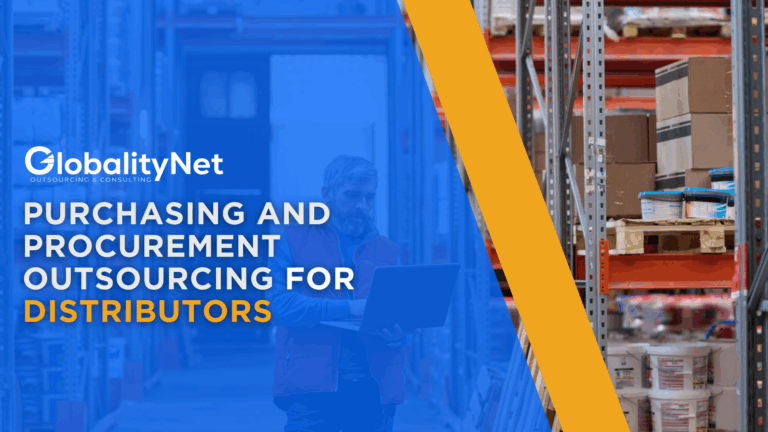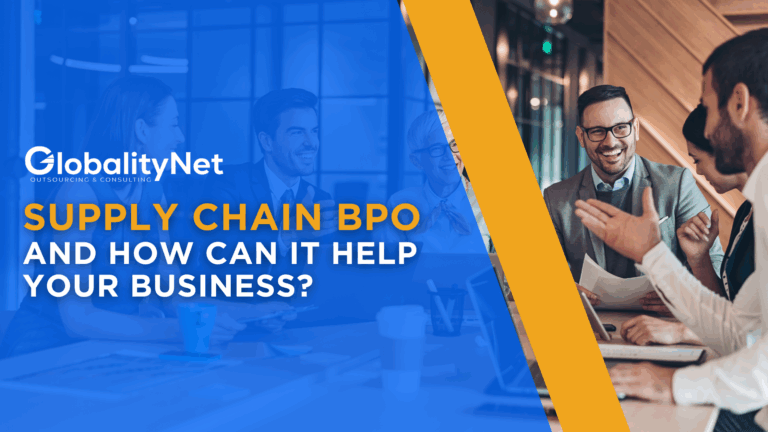When supply chains get messy, the first cracks often appear in purchasing and procurement. Too many purchase orders piling up, suppliers calling nonstop, and buyers stretched so thin that errors start slipping through. At GlobalityNet, we’ve seen it time and again—companies with great products held back by inefficient back-office processes.
That’s where purchasing outsourcing and procurement outsourcing come in. Done right, through a trusted supply chain BPO partner, these are two of the most effective ways to free your team from transactional overload while also gaining strategic leverage in your operations.
Common Pain Points in Purchasing and Procurement
Businesses often turn to outsourcing not just for efficiency, but to solve deeper pain points that keep their supply chain from running smoothly:
1. Rising Labor Costs
Hiring and retaining in-house purchasing staff can be expensive, especially in high-cost markets like the U.S. Purchasing BPO provides access to trained specialists at a fraction of the cost, without sacrificing quality.
2. Unqualified or Inexperienced Associates
A common challenge we see is companies relying on purchasing associates who are capable of clerical tasks, such as data entry, filing, and chasing approvals, but not skilled in analyzing spend data, negotiating with suppliers, or spotting inefficiencies. This gap limits the business to reactive buying instead of proactive supply chain management. Through procurement outsourcing, companies gain access to professionals who combine clerical precision with analytical expertise, ensuring smarter decisions and stronger supplier performance.
3. Inefficient Processes
Manual data entry, outdated spreadsheets, and slow approval cycles create bottlenecks. A supply chain outsourcing partner brings standardized workflows, automation tools, and KPI tracking that eliminate delays and errors.
4. Supplier Management Overload
As businesses grow, so does the supplier base. Without proper systems, managing dozens or hundreds of vendors becomes unmanageable. Outsourced procurement teams use structured processes and supplier scorecards to keep performance and costs in check.
5. Lack of Scalability
When order volumes spike, internal teams often can’t keep up. Outsourced purchasing and procurement teams scale up or down quickly, so businesses can respond to demand without scrambling to hire or train new staff.
What Is Purchasing Outsourcing?
Purchasing is the day-to-day execution of buying. Tasks often include:
- Creating and tracking purchase orders
- Coordinating with suppliers on deliveries
- Processing invoices and resolving mismatches
- Monitoring stock levels to trigger reorders
By shifting these repetitive but critical tasks to a purchasing BPO team, companies benefit from faster cycle times, fewer errors, and smoother supplier communication. At GlobalityNet, our teams specialize in purchasing workflows, we do it all day, every day, so the process becomes more reliable and cost-efficient for our clients.
What Is Procurement Outsourcing?
Procurement goes a step further. It’s the strategic side of supply management, covering:
- Sourcing and evaluating new suppliers
- Negotiating contracts and terms
- Managing supplier performance and compliance
- Running competitive bids and RFQs
Through supply chain outsourcing, companies gain access to experienced procurement professionals who bring market knowledge, negotiation expertise, and advanced tools to the table. Instead of just processing orders, procurement outsourcing ensures that every dollar spent delivers maximum value.
How Purchasing and Procurement Outsourcing Work Together
When combined under a supply chain BPO model, purchasing and procurement outsourcing create a powerful one-two punch:
- Purchasing outsourcing manages the high-volume, transactional work.
- Procurement outsourcing focuses on strategy, risk management, and supplier optimization.
Together, they strengthen the supply chain by:
- Reducing costs: Better supplier deals and fewer process errors
- Improving speed: Orders get placed, tracked, and received faster
- Enhancing visibility: Outsourced teams provide clear reporting and analytics
- Boosting scalability: As your business grows, the outsourced team scales with you, no need to scramble to hire buyers or build new systems
Making It Work for Your Business
The key is defining clear goals. Instead of saying “we need help with procurement,” set measurable outcomes:
- Reduce PO processing time by 50%
- Consolidate suppliers to cut costs by 15%
- Implement a supplier scorecard for ongoing performance tracking
At GlobalityNet, we recommend starting small, perhaps with purchasing BPO to clear backlogs, then layering in procurement outsourcing for greater strategic impact. This phased approach builds confidence and ensures smoother transitions.
Purchasing and procurement outsourcing aren’t just about cutting costs, they’re about building a smarter, stronger supply chain. With the right supply chain outsourcing partner, businesses can lower expenses, improve supplier relationships, and scale without the overhead of a large in-house team.
If your supply chain team is buried in paperwork, struggling with unqualified associates, or weighed down by high costs, it may be time to explore supply chain BPO. At GlobalityNet, we’ve helped companies unlock 70%–80% savings in employee cost while improving inventory and supplier performance, and we can help you do the same.










